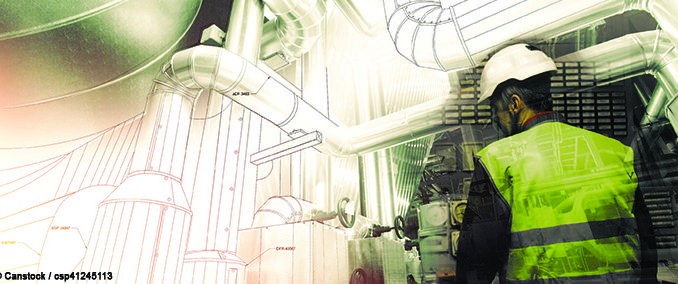
Changes in the pandemic’s status bring hope to construction sector experts, but supply issues remain
By / Robin Brunet
It was no secret that throughout 2020 and 2021, pent up demand combined with the construction industry’s lighting-fast implementation of COVID safety protocols resulted in robust activity across Canada, enabling the sector’s 1.4 million workers (according to the Canadian Construction Association [CCA]) to remain gainfully employed—and generate about $141 billion to the economy.
Now that the pandemic is poised to become an endemic, demand is healthier than ever. Sean Strickland, executive director, Canada’s Building Trades Union (CBTU), notes that, “Across the country, the construction sector has seen steady employment in most regions. Many large shutdowns were delayed because of the pandemic, and we expect this spring to be quite busy as those delayed projects ramp up.”
According to GlobalData’s report, Construction in Canada – Key Trends and Opportunities to 2025, the nation’s industry is expected to grow by 2.5 percent due to investments across the country in renewable energy, housing, water, and telecommunication infrastructure projects. Government funding is contributing to the growth: Ottawa has earmarked $10 billion in funding for clean energy, irrigation, and broadband projects that alone are expected to create 60,000 jobs. It will also spend $14.9 billion in public transportation projects over the next eight years.
But challenges caused by government-imposed COVID restrictions linger, namely, supply chain shortages and long delivery times. “Unfortunately, there are no quick fixes to these problems,” says Ian Cunningham, president of the Council of Ontario Construction Associations.
When CCA president Mary Van Buren was asked in December to forecast what would develop in the New Year, she predicted that supply shortages combined with rising inflation would create a “slingshot or stop/start recovery” in 2022.
She pointed out, “Virtually every material from lumber to steel has gone up in price. The fluctuating cost of building materials and the unpredictability of the supply chain are affecting budgets, estimates, and bids. The industry needs to look long and hard at areas that can be optimized to drive a better bottom line, including modernizing the tendering process.
“We also need to reduce delays in granting contracts and address cost escalation so that the sub-contractor isn’t left footing the entire bill for soaring material costs.”
Workforce shortages are very much a concern of HUB Construction Insurance and Risk Services. In its 2022 Construction Industry Outlook, the organization illustrates the magnitude of the problem by noting that while many other labour-competing industries such as transportation and warehousing had by August of 2021 recovered all jobs lost due to the pandemic restrictions, construction had failed to recover about 20 percent of its jobs lost.
The Outlook stated, “By 2030, the average Canadian construction worker will be 42 years old, and young people aren’t lining up work in construction. Over the next decade, firms need to recruit nearly 310,000 construction workers to replace those retiring and to meet demand; one report estimates the industry could be short 81,000 workers by 2030.”
The million-dollar question is, how to rectify the shortcoming? “It’s a problem that plagues all of the trades,” Cunningham says. “The only immediate solution is immigration: persuading workers in other countries to move here—and that’s difficult. In the longer term, we have to change our image away from the perception that construction is dirty work for unskilled people and toward the reality that we are in fact a highly technological sector that performs highly-skilled tasks.”
Inclusivity measures are regarded as a way to attract new blood, specifically, women. CBTU points out that women represent only four percent of Canada’s construction trade workforce, while sectors such as the military and law enforcement have surpassed 15 percent female representation. To close the gap, the CBTU’s Build Together, Women of the Building Trades program promotes, supports, and mentors women in the skilled construction trades and has tailored recruitment and retention strategies.
In a similar vein, the not-for-profit Canadian Association of Women in Construction (CAWIC) has a five-year plan to encourage women to choose construction for their career, which includes partnering with other associations to conduct workshops, conferences, and speaking events, emphasizing the high school setting in addition to universities and colleges.
Another area where the CBTU will continue to focus its advocacy efforts in 2022 revolves around the fact that since certain regions have more employment opportunities than others at different times, skilled trades workers have always had to travel for work. However, while salespeople, professionals, and Canadians in other industries can receive a tax deduction for the cost of their travel under the federal Income Tax Act, “The same option is denied to skilled trades workers who work on job sites that are in different regions or provinces from their primary residence,” Strickland says.
“In the prime minister’s recent mandate letters, the need to support labour mobility was included in letters crafted by both Deputy Prime Minister and Minister of Finance Chrystia Freeland and Minister of Labour Seamus O’Regan. CBTU is working hard to ensure a skilled trades workforce mobility tax deduction is included in the government’s upcoming budget.”
As for upcoming work opportunities, Strickland adds, “We continue to work with the government to invest in projects like industrial and commercial retrofits and developments such as regional clean energy power grids, including projects such as the Atlantic Loop and the East-West Power Grid that aim to remove interprovincial barriers to clean energy. As an example, the East-West power grid would involve building new electrical infrastructure so that British Columbia could sell Alberta electricity.”
Approximately 93 percent of BC’s energy is produced through renewables, while Alberta relies on coal for approximately 55 percent of its energy needs.
Finally, even though some analysts have warned of limited economic growth overall for Canada in 2022, Cunningham says, “We’ve been operating at capacity for years now, and the consensus is that our economy will puddle along at two to three percent growth this year—and that’s enough to stimulate our sector.” ■



